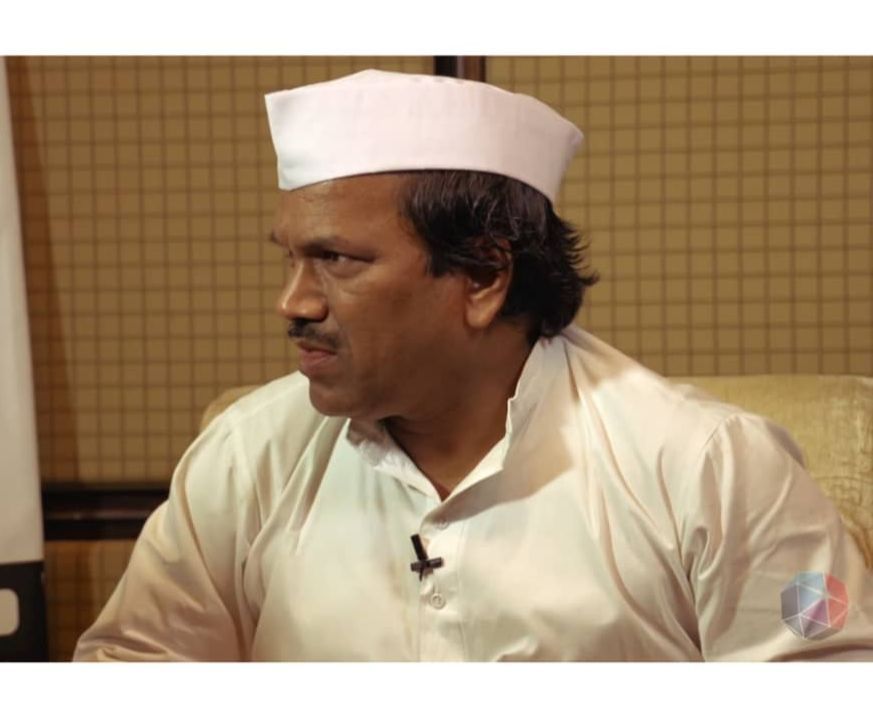How To Be A Horizontal And Vertical Leader At The Same Time

Do you find leading your organisation to be a constant balancing act? Sometimes you’re giving people flexibility to link up and learn, to ‘be their best’– but then, you’re pushing them to the limit, demanding results. You want to be interconnected, horizontal, and coolly supportive of people far and wide–a true ‘network leader’–but you also want discipline and vertical respect. Old-fashioned hierarchy can still have its place.
Tired of balancing ‘command’ versus ‘community’? Maybe it’s time to get off the horizontal/vertical see-saw and think differently about your organisation.
Getting to both/and
So argues Chris Fussell’s new book, One Mission: How Leaders Build a Team of Teams. Fussell (assisted by C.W. Goodyear) sketches a compelling ‘both/and’ approach, exhorting leaders to build ‘hybrid organisations’ that blend networks and hierarchy in the same enterprise. The former Navy SEAL and now McChrystal Group business consultant writes that network-hierarchy fusion is not only doable, but even critical.
And why not? Today’s global economy forces every leader to master the cognitive dissonance of granting freedom all around, while also continually seeking higher performance. One Mission is a blueprint for building a winning hybrid organisation to support your business strategy.
Beyond a team of teams
A decade ago, Fussell was aide-de-camp to Stan McChrystal who was leading a global Counter-terrorism Task Force in the Middle East. The two worked together, developing what McChrystal described in his own book as a ‘team of teams’ – a high performance intelligence and commando operation across the region to meet the then unprecedented network terrorism of Al-Qaeda.
McChrystal’s strategy-cum-memoir of 2015 painted an inspiring picture of transforming the bureaucratic dinosaur of allied military intelligence units into a nimble and deadly effective network, dramatically increasing successful strikes against insurgents. McChrystal’s story highlighted a new organisation model that combined ‘shared consciousness’ among networked but still hierarchically-organised units with ‘empowered execution’ by front-line soldiers.
The book insisted it was a formula that could also benefit commercial organisations competing in today’s interconnected and volatile world. Business leaders rallied to McChrystal’s New York Times bestseller, but for many, the book lacked how-to, non-military detail.
Fussell’s successor volume, crafted with two subsequent years of business applications, redresses the gap. One Mission serves up valuable, under-the-hood analysis of what McChrystal first pioneered – making the team-of-teams vision that much more actionable for businesses today.
The high-performing hybrid organisation
One Mission now explains why ‘team of teams’ worked so well in war, and more important, how its hybrid organisational model is now delivering higher performance in business. Fussell explains that the magic is created by leveraging the strengths of each organisational approach and in tandem, offsetting the negatives. The big idea is that savvy hybrid leaders leaven the structure of vertical bureaucracy with a more respectful and empowering culture of horizontal networks.
This is not the first call for bringing network and hierarchy together in one enterprise.
As Fussell notes, “academics have been writing about this for years,” and of course, the infamous matrix organisation model is a living museum of corporations trying to achieve the both/and of org-chart structure and team-based flexibility. More recent experiments to note might also include Nonaka’s ‘hypertext organisation’, networked community platform businesses (e.g. Uber, Task Rabbit, Airbnb), Red Hat’s ‘open-ish organisation’, Zappo’s holacracy, and others.
But there’s something new and valuable in Fussell’s book: One Mission goes beyond the original McChrystal team-of-teams story, now providing a more detailed discussion of what it takes to actually build the hybrid. As Fussell explained, “Structure is important, but this hybrid only works with the right kind of leader constantly setting an operating context for people to work together across silos and boundaries.”
So, how does a leader create that context?
Understanding organisational dynamics
“It begins,” Chris Fussell elaborated, “by understanding the positives and negatives of both parts of the potential hybrid. You have to get beyond the traditional framing of either/or.” “You can’t throw away what works in a bureaucracy – optimisation of assets, accountability, long- term planning and development of talent, certain linear decision-making processes. But we also know bureaucracies can be rigid, slow and risk-averse.”
“Teams and small units, by contrast, are unmatched for their spirit and agility of performance; also, their ability to make non-linear decisions and innovate on the fly. But they have disadvantages too: they get dug in with their own micro-cultures, creating parochial echo chambers, and then they won’t collaborate with other units.” “Sometimes a small team will connect with other people–which is human–and form networks, which is good. But then another negative: there’s no real plan or accountability when they do. Flash mobs or loose communities will arise, but they don’t get anything done long-term. Just remember, for example, Occupy Wall Street: lots of engagement, but no lasting change.”
“After working with several business clients, we realised that capturing the right strengths of both hierarchy and networks is partly design but mostly about leadership–showcasing expected behaviour, setting context, and encouraging ongoing experimentation–building a culture that honours and signals the need for both structure and freedom at the same time. The leader of a hybrid organisation has to let go of control, but also not let go too much.”
Related:
- The Most Effective Leadership Styles
- Choose Your Leadership Style
- Developing People: Recognising Different Leadership Behaviours
Four imperatives
So, how to do that?
Fussell’s book offers four imperatives for leaders, each framed under a ‘one mission’ culture: many small teams operating as a structured but flexible community; freely operating, but engaging and accountable to another; guided to keep learning and take action towards a shared performance goal. The four imperatives each demonstrate a synthesis of horizontal freedom and vertical structure that shapes the performance of a ‘networked hierarchy.’
Create an ‘aligning narrative’
The all-dominant performance mission begins with leaders creating an ‘aligning narrative.’
This first step is a bonding story of community and duty that cuts across ‘tribal prejudices,’ aimed at building shared commitment among all. The narrative appeals to both reason and emotions to focus everyone on the same meaningful outcome–a classic tool of hierarchical alignment.
But the storytelling must also still respect the frequent need for individual units to go their own way to meet the challenges of a shared mission–thus swinging the pendulum towards network freedom and flexibility. As Fussell commented, “the leader must weave stories in a way that each of the “tribal units” sees threats and opportunities beyond their own smaller perspectives–and come to the realisation that only by working together can they ever reach the desired performance.”
Foster ‘interconnection’
Small teams and ‘tribal units’ create their own realities that silently block listening to others, retarding collaborative innovation (endemic to a hierarchy). So, the leader must work tirelessly to foster communication and learning among all, going beyond formal structures (facilitating open, organisation-wide exchange; cross-team problem-solving and reflection to form social networks, and vice versa).
S/he must also accelerate cross-boundary communication by judicious ‘embedding’ of key influencers across and even beyond the organisation. These ‘planted advocates’ tap into knowledge and trade problem-solving insights with sympathetic partners.
In the Middle East military theatre, McChrystal achieved ‘interconnection’ by hosting and moderating community-wide open intelligence briefings and also placing knowledgeable allies in contributing civilian organisations (e.g. the CIA).
Fussell has now been profitably applying the same approach in commercial organisations, for example, by creating multi-unit briefings and network formation among historically adversarial groups working on one company’s technology service programs.
“The key,” Fussell noted, “is for leaders to facilitate the information-sharing, encouraging people to start ‘thinking out loud together.’ A good leader will pull the right values and ideas out of a community, by challenging people to reflect on the bigger issues that the leader himself or herself is facing. That raises the level of thinking and helps build the aligning narrative.”
Shape the hybrid organisation’s ‘operating rhythm’
A hierarchical organisation moves slowly but acts deliberately and hedges risk. Networks can be fast and fluid, but also volatile, or sometimes ephemeral. At its best, a hybrid organisation will not just balance deliberation and execution but actually create a self-reinforcing cycle of both.
“The leader’s challenge,” Fussell explained, “is to help the broader organisation find the right cadence to meet the pace of external threats and competition. The leader has to help the widely- distributed teams develop a sense of when to fall back–and listen and learn from others–and when to turn those lessons into action.”
In fighting Al-Qaeda, McChrystal wanted to ensure field operatives were continuously sharing intelligence across the entire network–and then, at suitable moments, converting that knowledge into living strategy, using new, superior insights about the enemy to beat terrorists at their own game.
Fussell highlighted a similar tempo he helped establish between group learning and front-line action in a major sportswear manufacturer plagued by supply chain issues. “Over time, the company evolved an effective rhythm of continuous improvement, with different units learning how to problem-solve together: first understanding what was causing delivery failures; then moving rapidly to implement fixes; and then falling back to analyse the next and higher level of issues, then to collaborate on solutions again, and so on.”
Reinforce ‘decision spaces’ for front-line operating units
‘Better to ask forgiveness than seek permission’ goes the old cliché – and a liberating cry for anyone frustrated in a bureaucracy. But too much ‘permission-free’ action can literally bring down a company, and yet, not enough innovating freedom can also spell doom if competitors are moving faster than you– which they always seem to do.
Thus, another hybrid organisational solution, again reflecting ‘both/and’ define specific boundaries (as a hierarchy) for when permission-free action is not only allowed but encouraged (as a network).
It’s the job of the leader to unleash and also leash: delineate well-defined decision-spaces that clarify when acting on your own might risk the success of the entire mission, but at the same time, within ‘the red lines’, also encourage rapid entrepreneurial action when need or opportunity arises.
As Fussell recalled: “McChrystal’s development of decision spaces across the Counter-terrorism Task Force was a major breakthrough, enabling the collected operational units to up significantly their strikes against the enemy. In businesses, we’re seeing the same liberating power of decision spaces, leaders intentionally framing front-line empowerment, so they can act more quickly and confidently than before.”
Becoming a hybrid leader
One Mission is rich with technical insights and examples that bring to life building an effective hybrid organisation.
But as I questioned Chris Fussell, he kept returning to leadership itself. He concluded our conversation with quiet reflection about the man at whose side he had learned so much – and then went on to extend his comments in more impersonal terms. “McChrystal always says how building a ‘team of teams’ forever changed his assumptions about being a leader. He had to begin by transforming himself, shifting his own identity to someone who doesn’t command so much as instead creating context for others to be successful.”
“Good leaders, including now many of our commercial clients, become humble. They don’t abandon control but use it to create a structure for continuous development of a performance community. “And instead of focusing on themselves, they devote their efforts to building the capabilities of others, giving them the knowledge and freedom to act whenever mission demands. That allows them to achieve things far greater than any one person or team could ever produce.”
Reposted with permission.
The author here suggests "The leader has to help the widely - distributed teams develop a sense of when to fall back – and listen and learn from others – and when to turn those lessons into action.” Hey Leaders, do you have a digital tool that allows you to listen & learn from others in your organisation? The solution is Happily. Watch this video.
To find out more about Happily, click here or email info@leaderonomics.com
Business
Tags: Executing Leadership, Systems & Structures, Transformation & Change, Organisational Challenges





